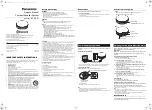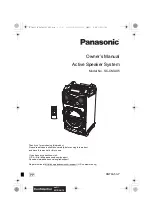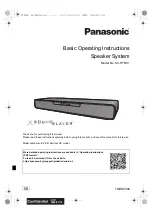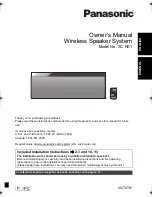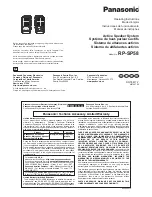
JABLOTRON
ALARMS
a.s.
Pod
Skalkou
4567/33
46601
Jablonec
n.
Nisou
Czech
Republic
www
.jablotron.com
||
|
JA-14K(R) Security System Control Panel
5 / 72
MNX22101
with an LCD display, local connection of the control panel and PC (with a USB cable) or remote access via
the Internet. In the SERVICE mode the system is completely out of operation (it does not do any monitoring
and does not provide any user functions, e.g. control of programmable PG outputs). The service technician may
adjust some system features during normal operation without having to switch the system over
to the SERVICE mode.
Control of appliances
– the system has programmable PG outputs that can be used to switch various devices
on and off. It represents the system logic and it controls the required number of output modules (devices
assigned to the system). An output can be controlled using the keypad buttons, by activation of detectors,
remote controls, by an event in the system (e.g. setting a section, alarm triggering,…), by a calendar action,
using an SMS command, by ringing of an authorized user. Activation of a PG output can also be blocked by
a status of a section or detector or by any other PG output. Activation of a PG output can also be, besides
optical indication, indicated acoustically (by a siren).
Schedule of automatic events (Calendar)
– using the weekly schedule automatic guarding (setting / partial
setting / unsetting) of sections and control of PG (activation / deactivation, blocking / unblocking) programmable
outputs can be programmed. The yearly schedule can be used to set deviations from the weekly schedule
(e.g. state holidays, personal holidays). The yearly schedule can be set for the current and following year.
BUS devices
– are connected to the system using a BUS cable (4-wire). The BUS ensures power supply as
well as communication. BUS devices (keypads, sirens etc.) require enrollment to a position (address) in the
system for their function. However, there are also devices that are only connected and work without being
enrolled on a position (some PG output modules).
Wireless devices
– to ensure communication, the control panel must be equipped with a radio module and the
wireless devices (detectors, keypads, sirens etc.) must be enrolled to a position (address) in the system.
However, there may also be devices in the system that do not occupy system positions (they are used for
reception only and do not report to the control panel), e.g. modules of PG outputs. To cover the area of a larger
site up to 3 radio modules can be installed in the system (connected with a BUS cable). The control panel
regularly checks the activity of selected wireless devices (the Supervision parameter) and also checks current
state of batteries. If communication with a wireless device is lost, the control panel indicates communication
fault. Radio modules check RF jamming/interference on the JA-10 system communication band. If the band is
jammed, the system triggers a Fault.
Intrusion detectors
– a group of detectors designed to identify the intruder. It includes detectors of motion or
opening. If they have set reactions for releasing a delayed or immediate alarm and its variations (e.g. or
confirmed) it determines how the detector is going to react to its activation. Fire, gas, flood or panic reaction
detectors do not belong to the group of intrusion detectors.
GSM communicator
– provides connection to a mobile phone network and the Internet. Thus, the system may
transmit data to the alarm receiving centre (ARC) as a main or backup channel. The communicator provides
remote access to the control panel with the use of the N-Link software, reporting events to users, remote control
of the system (via voice menu and SMS commands).
LAN communicator
– if included in the control panel, it provides fast remote access by N-Link SW and it can
also transmit data to an alarm receiving centre (ARC) service that is equipped with reception technology for the
Jablotron IP protocol. In the control panel settings you can select which communication type will be primary and
which will be used as a backup.
PSTN - Telephone communicator
– it can be installed in the control panel as a supplementary module for
analogue PSTN phone lines. It is able to transmit data to the alarm receiving centre in the standard phone
formats (CID, SIA DC-05 and SIA DC-03). It can also report events to users (by calling) and supports the
system remote control using the voice menu. The phone module is usually used as backup for the LAN
communication. The module can also communicate to a phone line simulated by radio transmitter.
Section
– a system can be split into parts ‘Sections’ which can be set and unset independently. A section may
also be a separate apartment in a house. Section interdependency can be set on the way it reminds you it is
protected by your own control panel (access rights, reports, displaying things on the keypad, acoustic
indication,…).
Common section
– is a separate section designed to be a subsection for a selected group of other sections.
When the master section is set as a last one, the common section is then set automatically. When a first master
section is unset then the common section is unset as well. The purpose is to secure areas such as halls.
Partial set
– is available for each section separately. If partial set is on, the system does not react
to intrusion detectors with the parameter “internal” set (i.e. monitor the indoor space). Thus, for example
movement is allowed in the residential part of the house, but the system triggers an alarm or entrance delay
when there is entry through a door or motion in a garage, cellar, etc. If a section is set completely, it reacts
to activation of all detectors that are assigned to it.
Bypass
– active status of devices or a fault present in the system is confirmed during system setting.
The status of active inputs is ignored after a bypass until they go to stand-by (deactivated). When inputs
go to standby (are deactivated) they are included with guarding. By bypassing system faults the user confirms

























